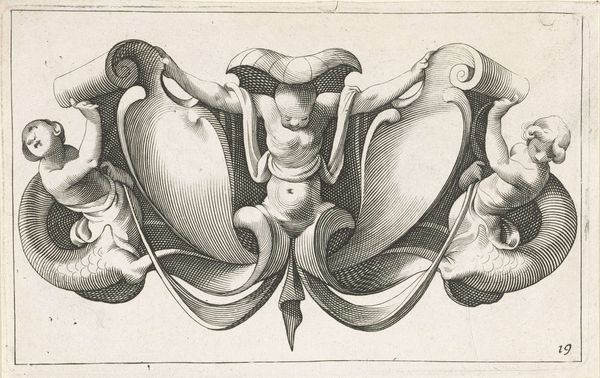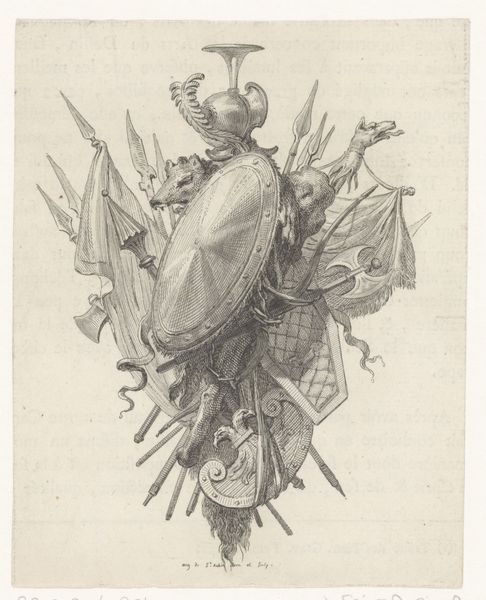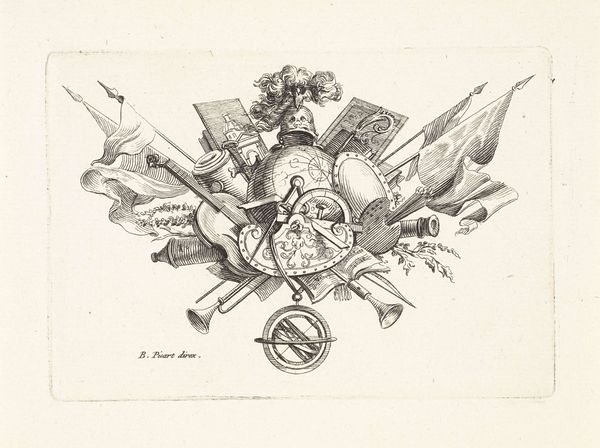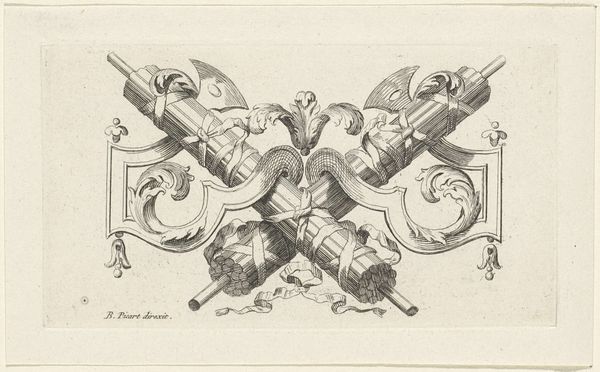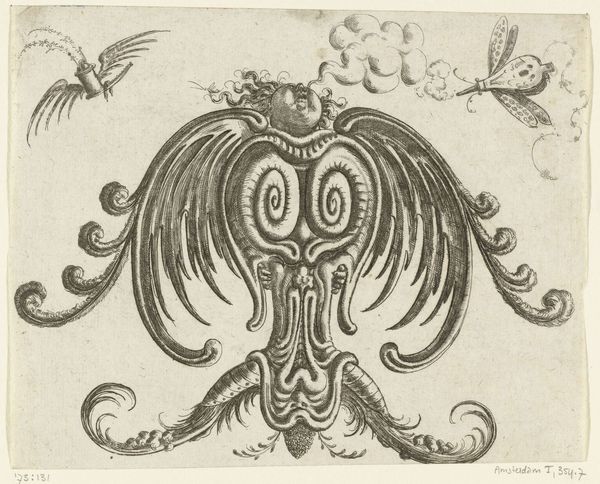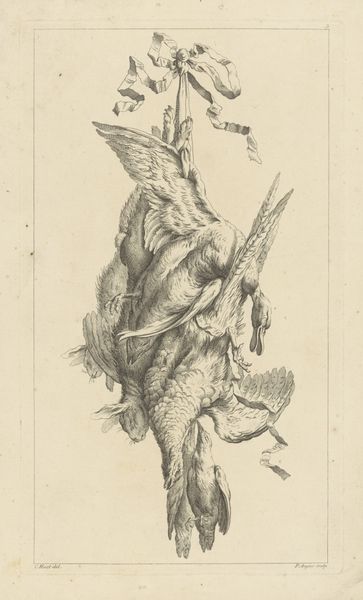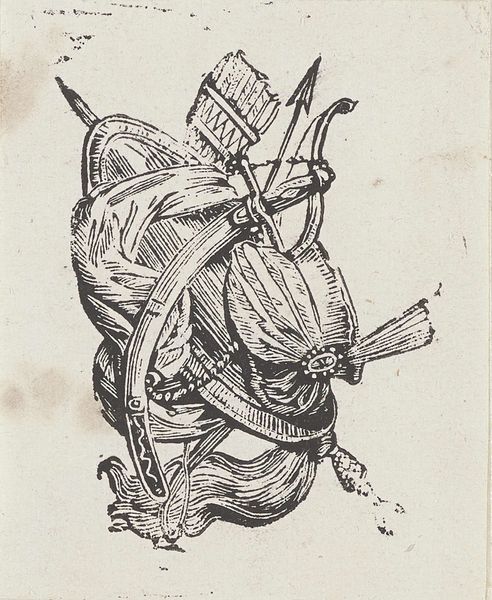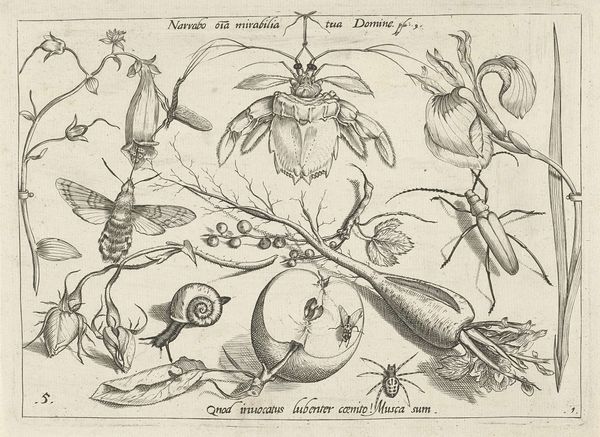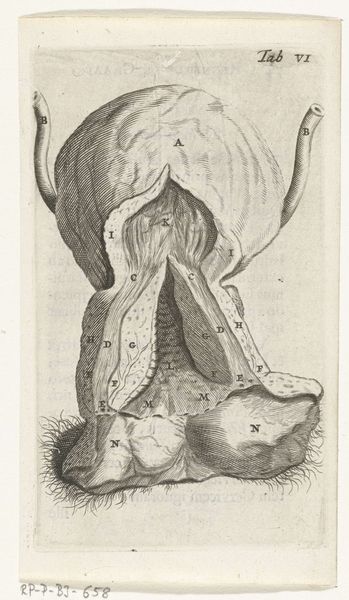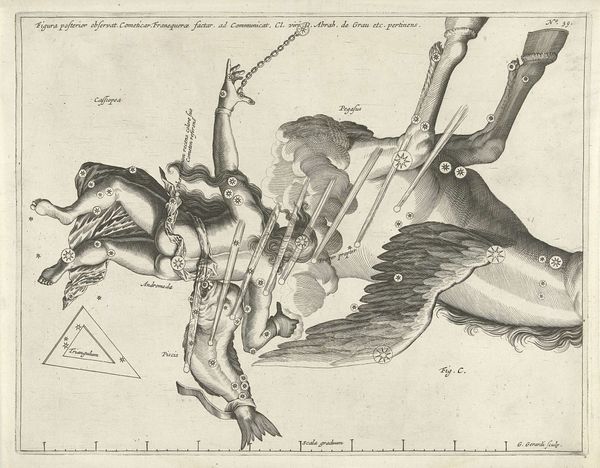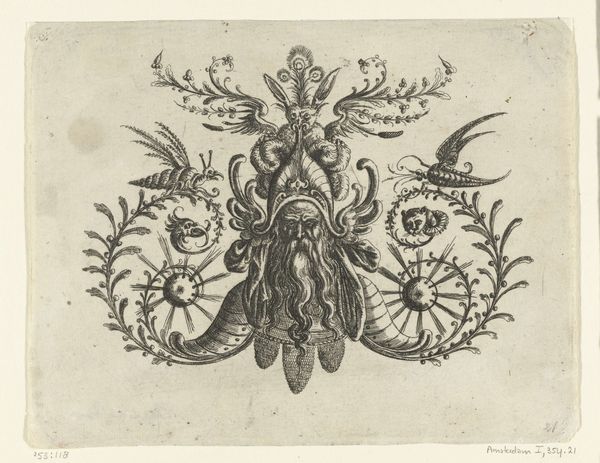
ornament, print, metal, engraving
#
ornament
#
baroque
# print
#
metal
#
pen illustration
#
line
#
engraving
Dimensions: height 73 mm, width 124 mm
Copyright: Rijks Museum: Open Domain
Curator: This is "Ornament met wapentuig," an engraving created around 1727 by Bernard Picart, housed here at the Rijksmuseum. The technique here is remarkable. What is your initial take on it? Editor: My first impression is quite unsettling. The sheer density of weaponry, combined with the swirling Baroque ornament, creates a mood of both aggression and elaborate artifice. Curator: Precisely. The composition is carefully structured. Notice the symmetrical arrangement, how Picart has balanced the diverse array of shields, spears, and flags around a central axis. Semiotically, each object represents a specific concept related to military prowess and nobility. Editor: And it's within that context of nobility that I find it disturbing. It evokes a visual rhetoric celebrating war during a time when European powers were vying for global dominance, often with brutal consequences for colonized peoples. How might this image have functioned as propaganda or simply served as an aesthetic embellishment that normalized violence? Curator: You raise a critical point about the ethics of representation. However, within the frame of art history, the quality of the line, the subtle gradations in shading achieved through engraving, create a complex visual texture that merits analysis. Picart's work manifests key attributes of the Baroque: dynamism, complex composition, and use of light to heighten emotion. Editor: But emotion manipulated to what end? Doesn't the beauty of execution distract from the potential for violent oppression? The image becomes deeply ambivalent. How can we critically admire it, yet simultaneously acknowledge the darker sociopolitical underpinnings of its aesthetic choices? Curator: Such contradictions invite inquiry and reassessment. Engaging with the material and formal qualities is also crucial because, as art historians, our role involves deciphering the visual vocabulary through which historical periods express their worldview. Editor: Perhaps by examining these details and simultaneously deconstructing those cultural assumptions, we can cultivate a much more holistic comprehension of both past and present injustices. Curator: I agree that this piece creates a space where questions are more valuable than definite responses. Editor: A productive point, indeed. Let’s turn our attention to the next piece and explore it in detail.
Comments
No comments
Be the first to comment and join the conversation on the ultimate creative platform.
